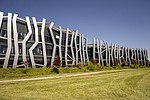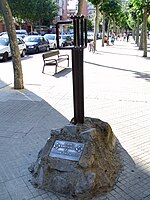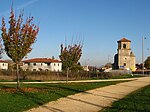Salburua
Birdwatching sites in SpainNatura 2000 in the Basque Country (autonomous community)Parks in Vitoria-GasteizProtected areas of the Basque Country (autonomous community)Ramsar sites in Spain ... and 1 more
Wetlands of the Basque Country (autonomous community)

Salburua is a wetland habitat on the eastern outskirts of the city of Vitoria-Gasteiz in the Basque Country in Spain. The area, which is part of the city green belt, contains lakes, meadows and oak groves. It was drained in the 19th century to transform the area into farmland. Restoration work started in 1994 and has reversed this situation and now Salburua is a Ramsar Wetland of International Importance. The Salburua marshes are considered to be "the Basque country's most valuable area of wetland", according to a Fedenatur report for the European Commission in 2004.
Excerpt from the Wikipedia article Salburua (License: CC BY-SA 3.0, Authors, Images).Salburua
Viena kalea/Calle Viena, Vitoria-Gasteiz Salburua
Geographical coordinates (GPS) Address Nearby Places Show on map
Geographical coordinates (GPS)
| Latitude | Longitude |
|---|---|
| N 42.852777777778 ° | E -2.6513888888889 ° |
Address
Viena kalea/Calle Viena 11
01002 Vitoria-Gasteiz, Salburua
Autonomous Community of the Basque Country, Spain
Open on Google Maps









